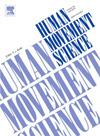Detecting optimal gaze behavior of successful basketball free throwing via machine learning system
IF 1.9
3区 心理学
Q4 NEUROSCIENCES
引用次数: 0
Abstract
Eye tracking in sport is an emerging field that explores the relationships between visual function and motor performance. However, research has shown that visual behaviors are distinct enough to detect superior performance; and serve as a suitable input for designing machine learning systems, few study has been tested yet the eye tracking machine learning in sport tasks. The current research investigated the eye movement behaviors for detecting successful performance using machine learning. The gaze behavior of 25 student basketball players during the hit and miss free- throwing's trials was collected and analyzed by statistical (JMP pro) and machine learning (Python) approaches. Results showed significant differences between saccade duration in hit and miss trials. In previous studies of free throwing, fixations were used as a measure of visual information processing, but our results showed that the metrics related to saccades were more important for successful performance than those related to fixations. These findings highlight the importance of eye tracking machine learning in sport domain and suggest that successful performance can be reliably predicted from performers' eye movement data. Our results provide primary insights as well as inspiration for future research focusing on developing eye-tracking machine learning systems to detect proficiency in motor skills.
基于机器学习系统的篮球罚球最佳凝视行为检测
运动中的眼动追踪是一个探索视觉功能和运动表现之间关系的新兴领域。然而,研究表明,视觉行为足够明显,足以检测出卓越的表现;作为设计机器学习系统的合适输入,目前很少有研究对运动任务中的眼动追踪机器学习进行测试。目前的研究利用机器学习研究了检测成功表演的眼动行为。采用统计学软件(JMP pro)和机器学习软件(Python)对25名学生篮球运动员罚球投中和失中练习过程中的注视行为进行了收集和分析。结果显示,在击中试验和未击中试验中,扫视持续时间存在显著差异。在之前的自由投掷研究中,注视被用作视觉信息处理的衡量标准,但我们的研究结果表明,与扫视相关的指标比与注视相关的指标对成功的投掷更重要。这些发现突出了眼动追踪机器学习在运动领域的重要性,并表明可以从表演者的眼动数据中可靠地预测成功的表演。我们的研究结果为未来专注于开发眼球追踪机器学习系统以检测运动技能熟练程度的研究提供了初步见解和灵感。
本文章由计算机程序翻译,如有差异,请以英文原文为准。
求助全文
约1分钟内获得全文
求助全文
来源期刊

Human Movement Science
医学-神经科学
CiteScore
3.80
自引率
4.80%
发文量
89
审稿时长
42 days
期刊介绍:
Human Movement Science provides a medium for publishing disciplinary and multidisciplinary studies on human movement. It brings together psychological, biomechanical and neurophysiological research on the control, organization and learning of human movement, including the perceptual support of movement. The overarching goal of the journal is to publish articles that help advance theoretical understanding of the control and organization of human movement, as well as changes therein as a function of development, learning and rehabilitation. The nature of the research reported may vary from fundamental theoretical or empirical studies to more applied studies in the fields of, for example, sport, dance and rehabilitation with the proviso that all studies have a distinct theoretical bearing. Also, reviews and meta-studies advancing the understanding of human movement are welcome.
These aims and scope imply that purely descriptive studies are not acceptable, while methodological articles are only acceptable if the methodology in question opens up new vistas in understanding the control and organization of human movement. The same holds for articles on exercise physiology, which in general are not supported, unless they speak to the control and organization of human movement. In general, it is required that the theoretical message of articles published in Human Movement Science is, to a certain extent, innovative and not dismissible as just "more of the same."
 求助内容:
求助内容: 应助结果提醒方式:
应助结果提醒方式:


